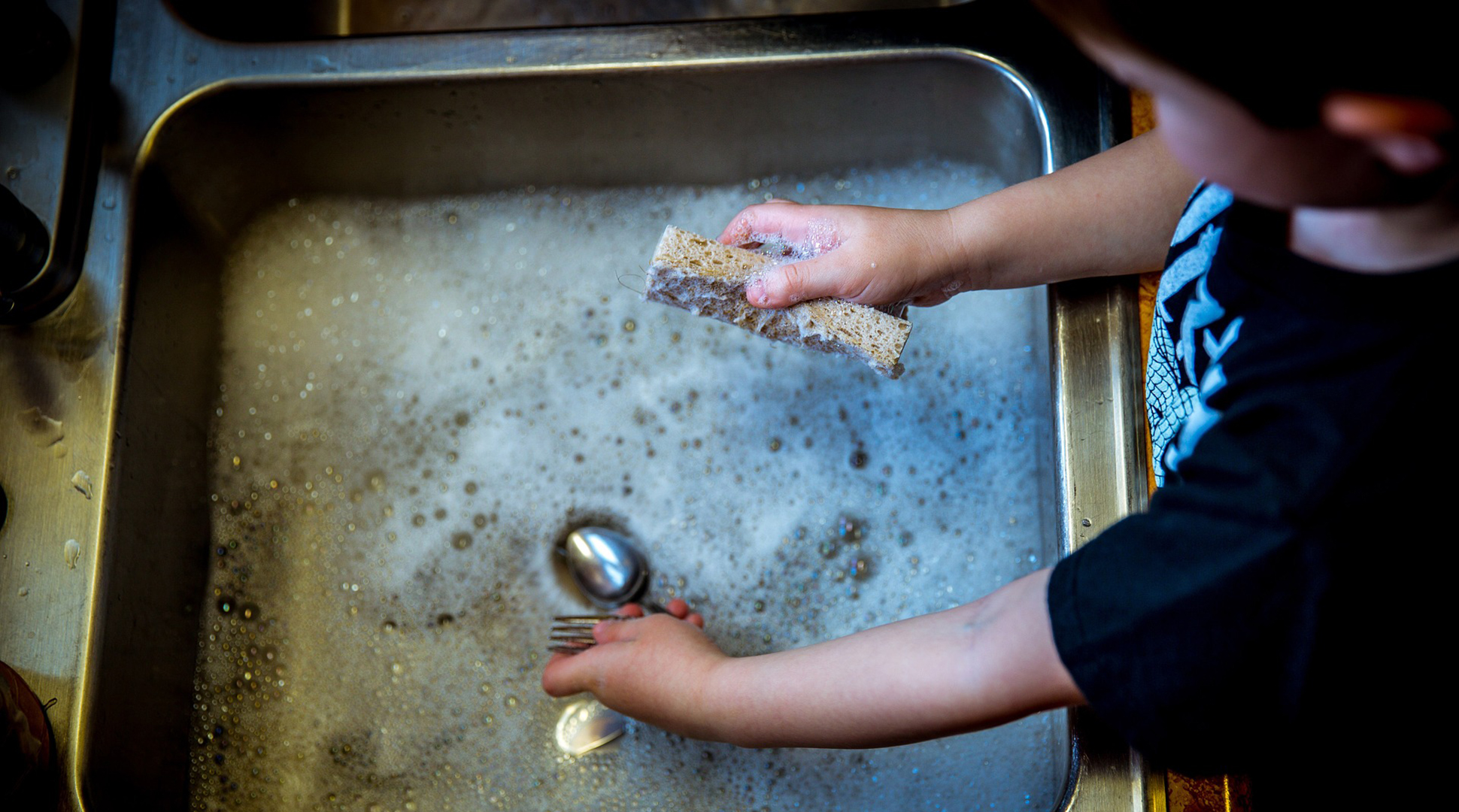By Julie Garden-Robinson
Technically, our calendars inform us it's spring, even though daffodils and tulips are hiding below the soil in my neighborhood. The birds probably are wondering if they missed summer.
Spring puts me in a cleaning mood, even when snow still is blanketing the ground. In the kitchen, spring cleaning usually means scrubbing surfaces and cleaning out the refrigerator and other appliances.
We can see dirt, dust and food debris, and we can clean it with hot, soapy water. However, sometimes "clean," shiny surfaces are not necessarily sanitary. Sanitizing takes cleaning a step further and reduces the number of bacteria on surfaces.
Although many commercial cleaners are available, you can make an effective homemade sanitizer to use on kitchen surfaces. Simply mix 3/4 teaspoon of liquid chlorine bleach in a quart of water, place it in a spray bottle and apply to clean surfaces to reduce bacteria. If you want a larger batch of sanitizer, mix 1 tablespoon of chlorine bleach in a gallon of water.
If you make your own chlorine-based sanitizer, discard it after a week. It loses its effectiveness with time. If you are dipping a cleaning cloth into the sanitizer, be aware that the solution can lose its effectiveness if food particles get in the mixture.
You can use this sanitizer to wipe most counter surfaces, but you might want to test it in an inconspicuous spot. Also, you can disinfect your drain and garbage disposal with this sanitizer.
Have you ever discovered sour-smelling kitchen washcloths and/or towels in your kitchen? That usually indicates the growth of germs, but pathogens (disease-causing organisms) may have no scent.
Along with his associates, Chuck Gerba, a microbiology researcher from Arizona, tested hand towels to determine their bacterial contents. They collected 82 kitchen hand towels from five cities in the U.S. and Canada.
The presence of coliform bacteria (fecal contamination) is used to indicate the sanitary quality of food and water. The researchers found coliform bacteria in three-fourths of the towels and E. coli in more than one-fourth.
Yes, that's gross. If you use cloth towels and dishrags, launder them in the hot cycle of a washing machine and add some bleach as an extra measure.
In another study, Gerba's research team studied kitchen sponges. Sponges were the worst offenders in the kitchen because they provided a moist environment to promote bacterial growth. Think about wiping up blood from meat with these porous, moist materials.
The team suggested using paper towels to avoid the issue with cross-contamination. Clean the surface, wipe with a paper towel and toss the paper towel. If you can't give up sponges, be sure to take some steps to ensure you are not spreading germs around your kitchen.
However, the research results do not all agree on how to clean sponges.
The Good Housekeeping Institute worked with a testing lab to determine the best way to clean sponges. According to their analysis, the most effective way to clean a sponge was to soak it in a solution of 3/4 cup of chlorine bleach in 1 gallon of water for five minutes every week. They also recommended changing sponges every couple of weeks.
Other methods have been used to clean kitchen sponges, and Good Housekeeping also found these to be effective. For example, microwaving a moist sponge for a couple of minutes can reduce bacteria.
On the other hand, kitchen fires have been reported when people have forgotten the sponge in the microwave oven and "cooked it" too long.
Still other researchers have reported that microwaving a sponge may kill just the less harmful bacteria, leaving residual food and moisture available for some infection-causing germs. In other words, some of the worst germs survived microwaving.
As another option, Good Housekeeping reported that running sponges through the hot cycle of the dishwasher was the third most effective way of cleaning sponges.
I prefer wash rags changed daily and washed in the hot cycle of our washing machine.
Garden-Robinson is a North Dakota State University Extension Service food and nutrition specialist and professor in the Department of Health, Nutrition and Exercise Sciences.
